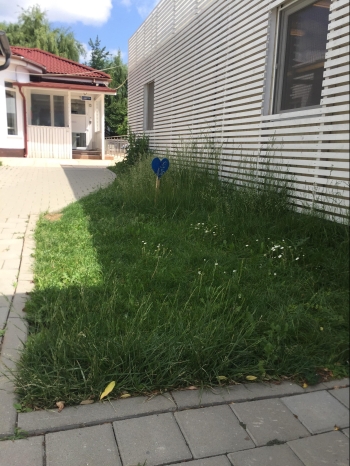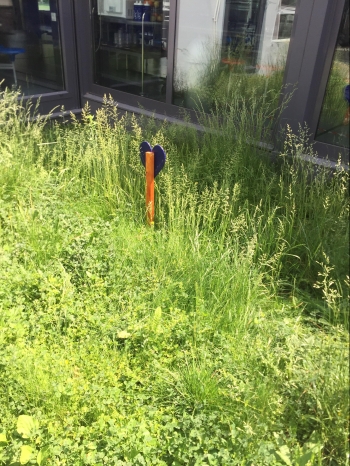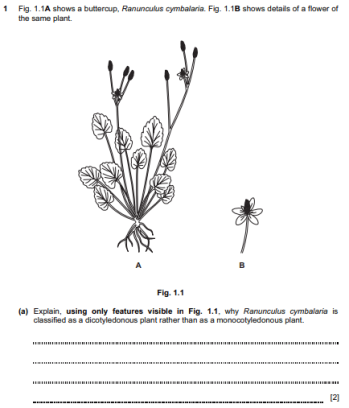I wrote a while back about the creation of a school rewilding zone and some of trials and triumphs surrounding this endeavor. Whilst use of the rewilding zone as an outside learning resource continues to grow (no pun intended) across all key stages, we have added an extra resource to the same end that is proving equally valuable – rewilding satellite sites.

Rewilding patch outside music classroom
The idea for these rewilding patches came from seeing a Tweet of Chris Packham’s about the Blue Heart Campaign – A drive to allow small areas of school grounds to grow wild. I identified two suitable sites and asked the maintenance team manager if they would cease cutting these areas over the spring and summer months. Whilst she did agree to this request, it came with two conditions that I was happy to meet. One was to place the blue hearts in full view of anybody passing by and the other to make parents aware of the purpose of what might otherwise be regarded as mess. I understand that the maintenance team have a good reputation to uphold and do not want anybody to think that areas are growing wild simply due to neglect.
Always happy to help, the Design and Technology technician knocked together and painted two smart-looking blue heart posts. The marketing team put out a Facebook post and placed a professional-style poster on the notice board at the front gate to raise parental awareness.
And so our rewilding patches were born – One alongside the dining hall (which is made up of two patches really, one small and one large) and another outside the music classroom. The music teacher had recently read George Monbiot’s Feral and so was only too pleased to grant permission. Over the four or so weeks after the last of the snow finally thawed, with temperatures rising alarmingly quickly (From -3oC to 21oC in seven days), the grass grew taller and wildflowers began to appear as did bee flies, moths, and honey bees. At first I wanted to avoid watering the patches as I felt this wasn’t in the spirit of rewilding but soon found that without this intervention these small spaces quickly dried out. The school maintenance team once again proved their willingness to assist by agreeing to include the patches in the daily watering schedule, since when the plants have really taken off.

Blue heart facing dining hall
These areas have so far proven to be valuable extensions of the classroom for Secondary pupils learning field-research skills such as quadrating and using pooters to catch invertebrates. The invertebrates can be identified in-the-field with the aid of a magnifying glass as per the arthropod classification sub-topic within the Cambridge IGCSE programme. Any slugs, beetles, spiders and so on can be photographed on an iPad and later drawn and labelled for their defining features such as the presence of a thorax, practicing an important ‘alternative to practical’ component. Plants can also be used to the same end, identifying the similarities and differences between monocotyledons and dicotyledons, as well as labelling the parts of a flower. I have seen Primary using the patches too, for bug hunts.

Cambridge Biology IGCSE past paper question
I have been pushing outdoor learning across the Secondary science department this year and enjoyed observing a Year 8 lesson where the pupils compared levels of biodiversity within rewilding patches compared to regularly mowed areas. Whilst I was not convinced their methodology was free from bias, one thing was abundantly clear – these patches do show incredible biodiversity for such small areas, possibly benefiting from the school being located on the edge of a forest. Ask your school if you can rewild a couple of grass areas and let me know how it goes.
Reblogged this on BES TEACHING AND LEARNING.
LikeLike